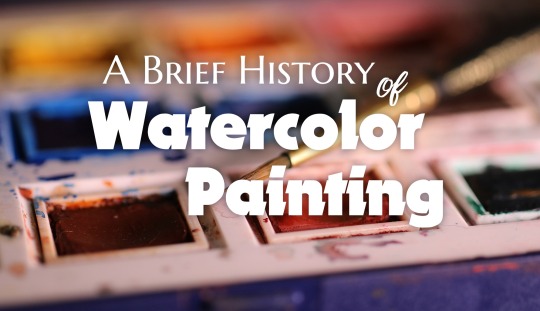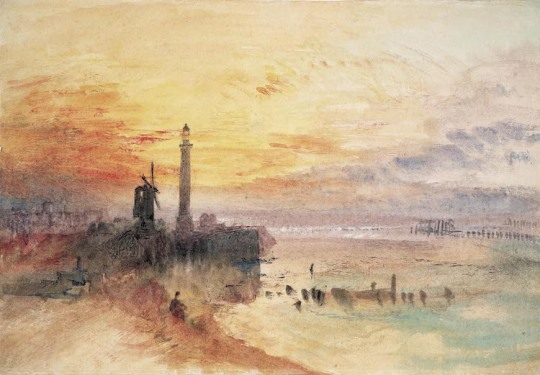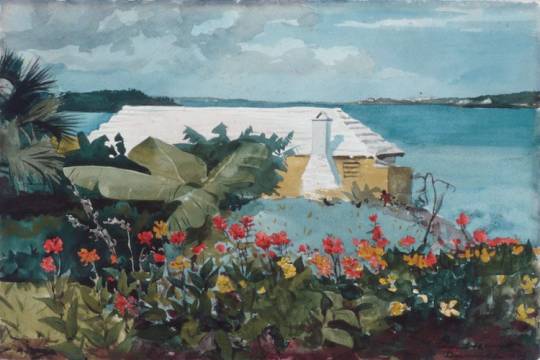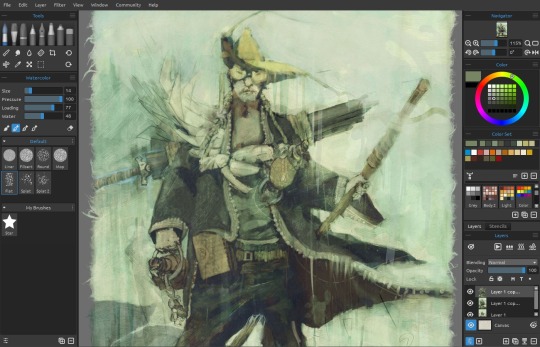Which Side Of Watercolor Paper Should You Paint On
A Brief History of Watercolor Painting
Wed, twenty Feb 2019 13:38:39 +0100
The knowledge of grinding paint and dyes with water is very old. It can be plant in the earliest manifestations of man culture as the simplest decorative technique, dating to the cave paintings created with fingers, sticks, and bones. Examples tin be also found in ancient Egyptian times when water-based paints were used to decorate walls of temples and tombs or to illustrate manuscripts made of papyrus like the Egyptian Books of the Dead. Watercolor has been a ascendant medium in Chinese, Korean and Japanese painting, where decorative objects like hand fans, lamps, shades, and hanging images were enhanced with the paint. For a long fourth dimension, watercolor was considered a supporting method in European art. Its utilize was bars to preliminary sketches for oils and pen and wash illustration, for preparation of last paintings and for coloring the artwork. The Dutch and Flemish painters of the 17th century produced sketches of landscapes or interiors, and great frescoes used watercolor "simply" every bit a quick work tool for their study compositions. The continuous history of watercolor every bit an art medium began with the Renaissance and information technology wasn't until the end of the 17th century when it became a truly independent painting technique. The boom of the watercolor technique started with the English schoolhouse in the 2nd one-half of the 18th century. Painters in this period raised the watercolor to an independent fine art medium, showing its strength and fineness together with extraordinary immediacy. Amongst the pioneers who distinguished the vast watercolor options wasPaul Sandby (1731-1809), map-maker and mural painter, who used transparent and opaque painting methods in his fine art. He created virtually half of the watercolors works of that time, was a recognized public effigy and also became a founding member of the Royal University. It is no wonder he was called "the father of modern landscape painting in watercolors". Other groovy painters of the English language school who preferred watercolor in a definitive manner and thus were at the beginning of the deeper evolution of watercolor were William Turner (1775-1851) and Thomas Girtin (1775-1802). Turner, who excelled at watercolor experimentation, demonstrated the unequalled qualities of watercolor as a art medium. His contemplative landscapes were tremendously influential on dozens of artists during later decades and he went on to go one of the greatest painters of the nineteenth century. Girtin, with a express range of colors, has created breathtaking landscape scenery, sketch and precise detail that always retain a fresh await. J.Thou.Westward. Turner: "Swell Yarmouth Harbour, Norfolk," circa 1840. (Photo: National Gallery of Ireland) The influence of the English school helped popularize watercolor in the residuum of Europe, especially in France. One of the near influential artists of the 19th century and the inspirator of modernistic art was a French painterPaul Cézanne (1839-1906) who developed a watercolor painting style consisting entirely of overlapping modest glazes of pure color. Cézanne changed the course of European art forever as he altered both the way we expect at the world and the style nosotros record it. Amid other European artists who produced important works in watercolor areEmil Nolde, Paul Klee, and Wassily Kandinsky, who is generally credited every bit the pioneer of abstruse art. P. Cézanne: "Still Life with Watermelon and Pomegranates" (1900-1906) Although the papermaking tradition dates back to ancient times, the paper had to exist imported to Europe from other parts of the globe until the 13th century. A high-quality paper that is much needed for a quality watercolor was non produced in United kingdom of great britain and northern ireland until much afterward during the eighteenth century. Its manufacturing enabled the watercolor painting to evolve quicker than ever. Moreover, early on watercolorists used to grind their own pigments. In the 1850s, the companies Winsor & Newton or Reeves began producing paint packaged in metal tubes and in portable dried cakes which pleased the public - apprentice artists, Sunday painters, and ladies being cultured in finishing school rejoiced in the easy accessibility of quality paint supplies. This development has contributed to the watercolor beingness spread overseas. The growing engineering science which developed with the advanced paper and colour making helped popularize watercolor painting in the United States during the 19th and 20th century. American artists were more interested in experimenting with watercolor since they were free of rigid English traditions. They were able to explore and find a unique arroyo to this medium and unlike European artists, they saw watercolor every bit a primary medium, even as an equal to oils. By 1866 the involvement in watercolor was so distinct that the American Lodge of Painters in H2o Color was founded and for the get-go time watercolors were shown in galleries aslope oil paintings. Famous American watercolorists include Winslow Homer (1836-1910), He found a rich source of themes in nature by closely observing the scenic dazzler of the natural earth, fishermen, the sea, and the marine weather, as evidenced in his seascapes of Maine, the soft colors of the Bahamas and the splendor of the Adirondacks. He also as other American artists not only re-popularized the medium just continued a long tradition of innovative experimentation and thus became a huge influence on the history of watercolor painting. Westward. Homer:"Flower Garden and Bungalow," Bermuda, 1899. (Photograph: The Metropolitan Museum of Art) In the 20th century, the watercolor technique continues to develop and brings itself to the attention of wider masses. In the 1940s with the increase of color magazine printing, information technology has become popular amongst illustrators and has been used to a large extent to this day. In the 21st century, artists have taken reward of this unique medium to create striking works of art. Comics' artists are even so coloring in watercolor too as illustrators of books, especially those intended for children. Above all, watercolor painting is versatile, alternately offering rich, vivid tones or soft, soothing forms. The next, once unimaginable step for watercolors is a digital environs. Many traditional artists nowadays have switched to digital painting - some felt the urge to experiment, some tried to cutting the cost of the supplies traditional painting requires. At that place is numerous painting software available on the market nowadays which effort to emulate the traditional painting techniques in the best possible style. Rebelle iii User Interface with Philipp S. Neundorf art Rebelle software is trying to push the boundaries of imitating this behavior fifty-fifty further - not but it allows the existent-time diffusion of water and colors, but it also mimics the behavior of watercolors on a real-world paper. What is the future of watercolors in your opinion? Are the advantages of digital painting tempting enough to overpower the traditional technique? Do you believe the future of watercolors or painting in general lies in the digital world? Share your feedback in the comment section below, nosotros'd love to hear your thoughts. Your Escape Motions Team Sources: world wide web.arthistory.cyberspace, world wide web.bigcityart.com, www.watercolorpainting.com, www.metmuseum.org, world wide web.wikipedia.com
The need for creative expression has been accompanying flesh since time immemorial. In the past, colors soluble in water represented the easiest fashion 1 could paint and over time, these colors take evolved into ane of the world'southward virtually renowned painting methods for artists. What has been the journey of watercolors from the beginning of their employ past prehistoric man until this day?
Ancient Times
English Schoolhouse
In the early 19th century watercolor was already in the programme of art schools and painting academies. It had besides get a favorite technique for painters of vedute and genre paintings. It was at this time that watercolor painting became established as a serious and expressive artistic medium.
Europe

Expansion of Newspaper and Color Making
American Watercolor

Watercolors Today
Digital - Future of Watercolors?

Paradigm Courtesy: Nick Collins | Unsplash.com
Source: https://www.escapemotions.com/blog/a-brief-history-of-watercolor-painting
Posted by: cooperdaverneat.blogspot.com


0 Response to "Which Side Of Watercolor Paper Should You Paint On"
Post a Comment